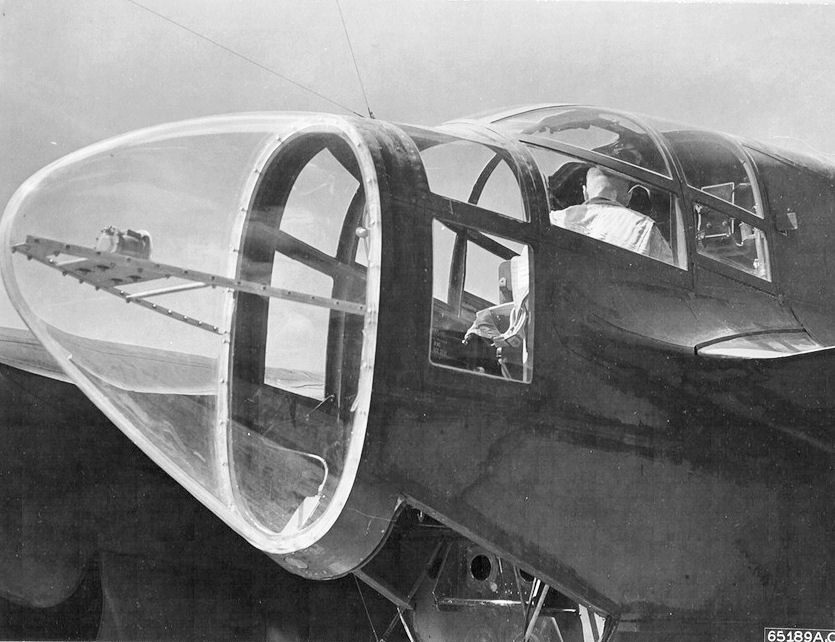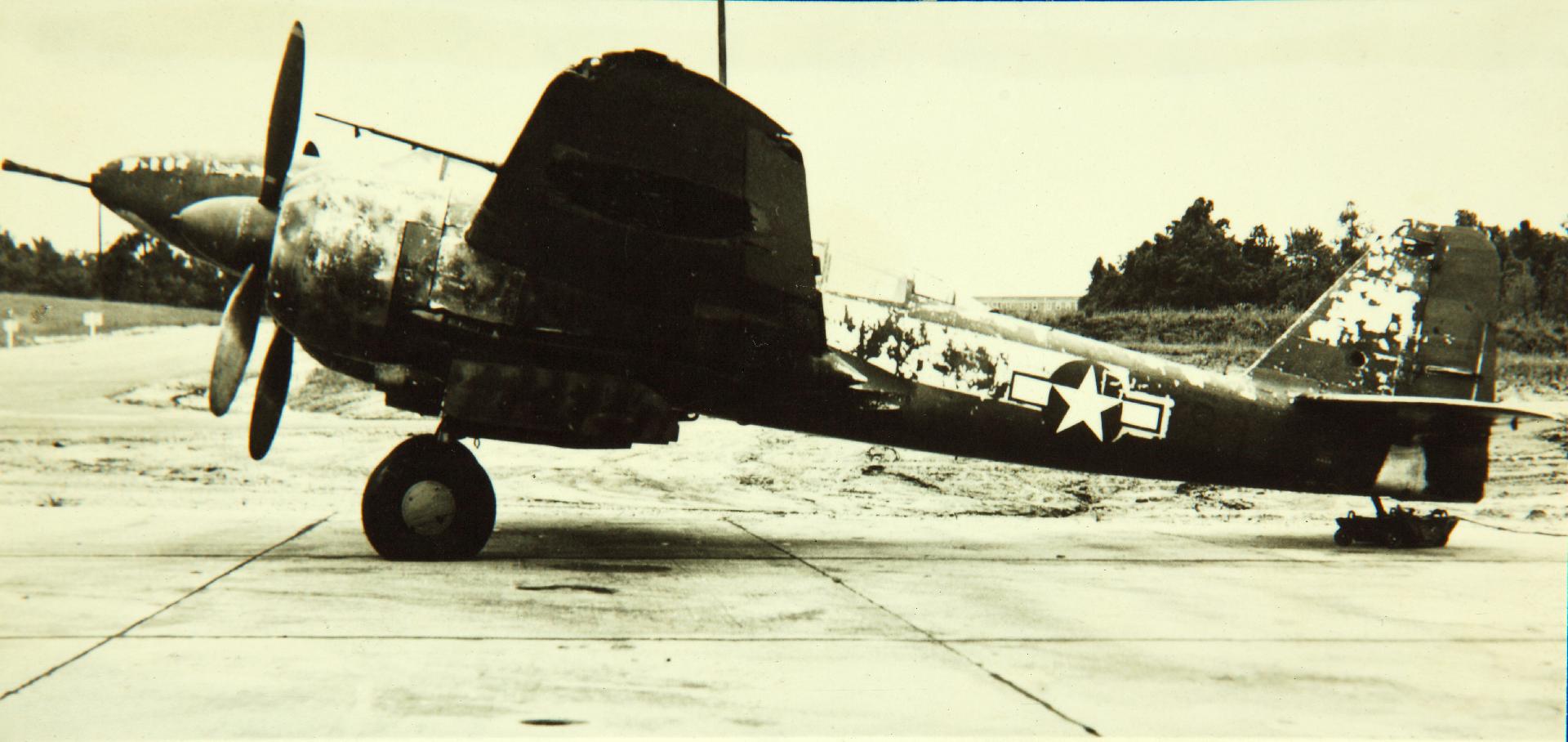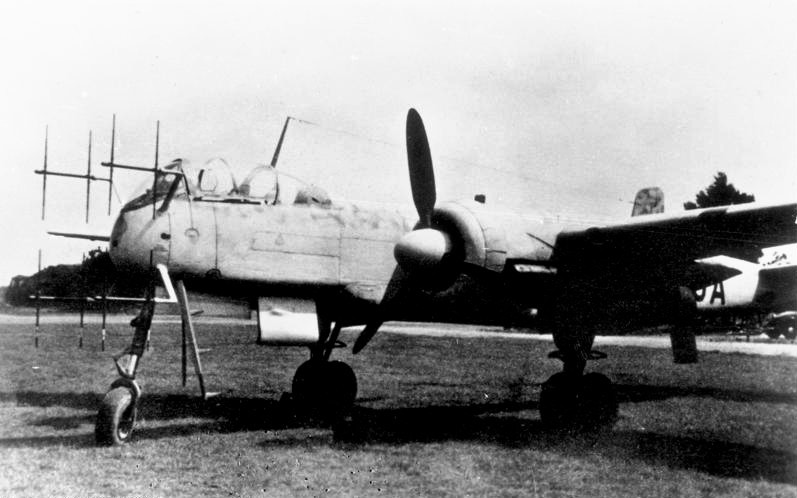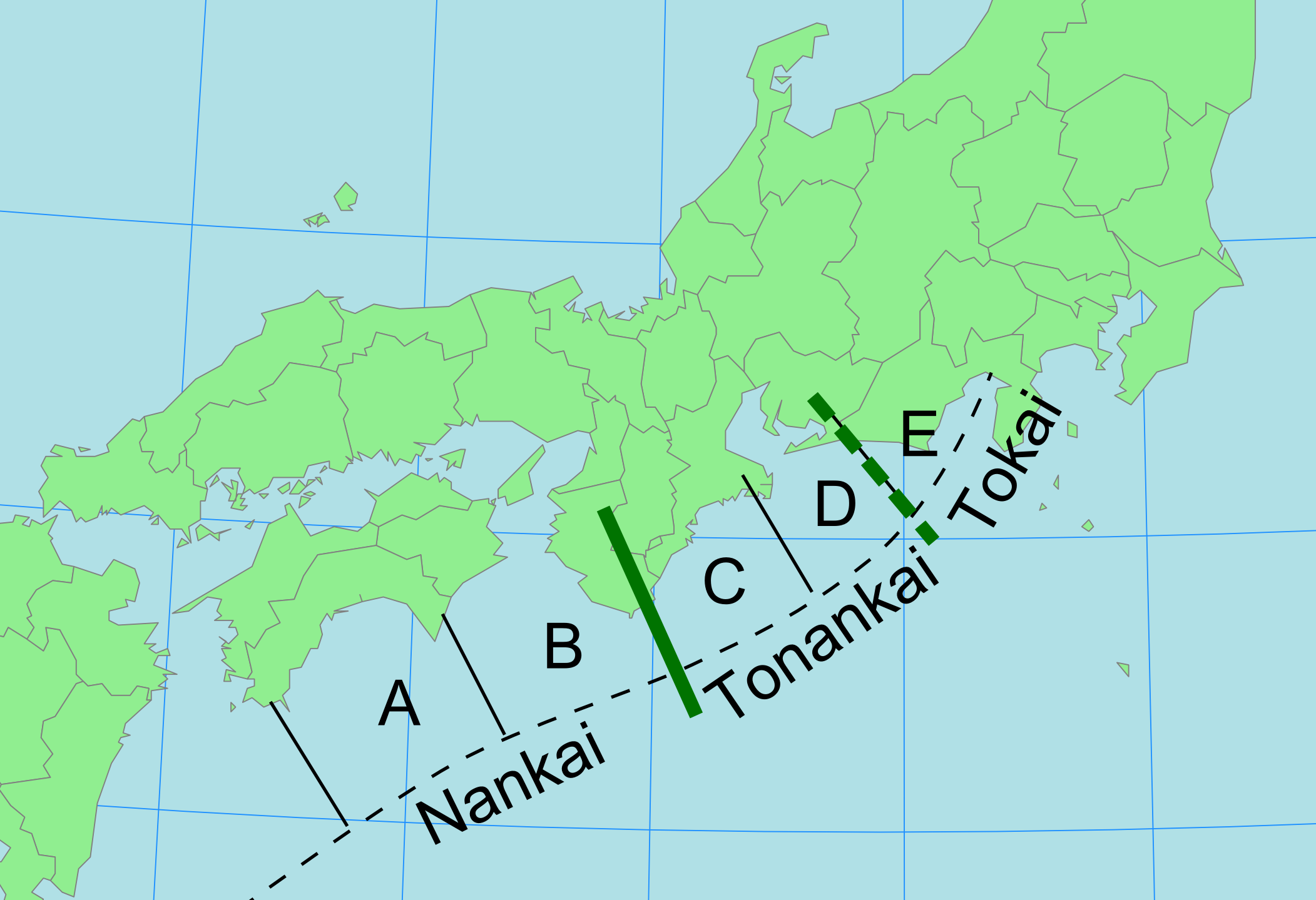|
Aichi S1A
The was a Japanese night fighter, intended to replace the Nakajima J1N1-S ''Gekkou'' ( Allied code name ''Irving''). Like the Gekkou, it was to be equipped with radar to counter the B-29 air raids over Japan. Development time for the S1A increased while trying to overcome design shortcomings, such as the insufficient power of the Navy's requested Nakajima Homare engines, resulting in no aircraft being completed before the war ended. Design and development The ''Denkos service weight exceeded ten thousand kilograms because the aircraft was full of special equipment including oxygen injection, but the turbocharger's remote location from the engine caused many problems. Because the initial prototypes' engines did not pass Navy standards only two aircraft were ever manufactured. Two more had been planned before cancellation that would have used the more powerful Mitsubishi HI MK9A Ru or MK10A Ru engines. Additionally, the Tōnankai earthquake occurred in December 1944 with the airc ... [...More Info...] [...Related Items...] OR: [Wikipedia] [Google] [Baidu] |
Night Fighter
A night fighter (also known as all-weather fighter or all-weather interceptor for a period of time after the Second World War) is a fighter aircraft adapted for use at night or in other times of bad visibility. Night fighters began to be used in World War I and included types that were specifically modified to operate at night. During the Second World War, night fighters were either purpose-built night fighter designs, or more commonly, heavy fighters or light bombers adapted for the mission, often employing radar or other systems for providing some sort of detection capability in low visibility. Many night fighters of the conflict also included instrument landing systems for landing at night, as turning on the runway lights made runways into an easy target for opposing intruders. Some experiments tested the use of day fighters on night missions, but these tended to work only under very favourable circumstances and were not widely successful. Avionics systems were greatly mi ... [...More Info...] [...Related Items...] OR: [Wikipedia] [Google] [Baidu] |
Airstrike
An airstrike, air strike or air raid is an offensive operation carried out by aircraft. Air strikes are delivered from aircraft such as blimps, balloons, fighters, heavy bombers, ground attack aircraft, attack helicopters and drones. The official definition includes all sorts of targets, including enemy air targets, but in popular usage the term is usually narrowed to a tactical (small-scale) attack on a ground or naval objective as opposed to a larger, more general attack such as carpet bombing. Weapons used in an airstrike can range from direct-fire aircraft-mounted cannons and machine guns, rockets and air-to-surface missiles, to various types of aerial bombs, glide bombs, cruise missiles, ballistic missiles, and even directed-energy weapons such as laser weapons. In close air support, air strikes are usually controlled by trained observers on the ground for coordination with ground troops and intelligence in a manner derived from artillery tactics. History ... [...More Info...] [...Related Items...] OR: [Wikipedia] [Google] [Baidu] |
Aichi Aircraft
is a prefecture of Japan located in the Chūbu region of Honshū. Aichi Prefecture has a population of 7,552,873 () and a geographic area of with a population density of . Aichi Prefecture borders Mie Prefecture to the west, Gifu Prefecture and Nagano Prefecture to the north, and Shizuoka Prefecture to the east. Overview Nagoya is the capital and largest city of Aichi Prefecture, and the fourth-largest city in Japan, with other major cities including Toyota, Okazaki, and Ichinomiya. Aichi Prefecture and Nagoya form the core of the Chūkyō metropolitan area, the third-largest metropolitan area in Japan and one of the largest metropolitan areas in the world. Aichi Prefecture is located on Japan's Pacific Ocean coast and forms part of the Tōkai region, a subregion of the Chūbu region and Kansai region. Aichi Prefecture is home to the Toyota Motor Corporation. Aichi Prefecture had many locations with the Higashiyama Zoo and Botanical Gardens, The Chubu Centrair International A ... [...More Info...] [...Related Items...] OR: [Wikipedia] [Google] [Baidu] |
Northrop P-61 Black Widow
The Northrop P-61 Black Widow is a twin-engine United States Army Air Forces fighter aircraft of World War II. It was the first operational U.S. warplane designed as a night fighter, and the first aircraft designed specifically as a night fighter. Named for the North American spider ''Latrodectus mactans'', it was an all-metal, twin-engine, twin-boom design armed with four forward-firing 20 mm (.79 in) Hispano M2 autocannon in the lower fuselage, and four M2 Browning machine guns in a dorsal gun turret. Developed during the war, the first test flight was made on May 26, 1942, with the first production aircraft rolling off the assembly line in October 1943. Although not produced in the large numbers of its contemporaries, the Black Widow was operated effectively as a night fighter by United States Army Air Forces squadrons in the European Theater, Pacific Theater, China Burma India Theater, and Mediterranean Theater during World War II. It replaced earlier Briti ... [...More Info...] [...Related Items...] OR: [Wikipedia] [Google] [Baidu] |
Mitsubishi Ki-83
The Mitsubishi Ki-83 (キ83) was a Japanese experimental long range heavy fighter designed near the end of World War II. It did not reach production status. Design and development The Mitsubishi Ki-83 was designed as a long range heavy fighter. It was designed and built by a team led by Tomio Kubo, designer of the highly successful Mitsubishi Ki-46. The design was a response to a 1943 specification for a new heavy fighter with great range. The first of four prototypes flew on 18 November 1944. The machines displayed remarkable maneuverability for aircraft of their size, being able to execute a 671 m (2,200 ft) diameter loop in just 31 seconds at a speed of over 644 km/h (400 mph). The Ki-83 carried a powerful armament of two 30 mm (1.18 in) and two 20 mm cannon in its nose. Despite the bomb-ravaged Japanese manufacturing sector, plans for the Ki-83 to enter production were underway when Japan surrendered on 15 August 1945. Both the existence ... [...More Info...] [...Related Items...] OR: [Wikipedia] [Google] [Baidu] |
Kawasaki Ki-102
The Kawasaki Ki-102 (Army Type 4 assault aircraft) was a Japanese warplane of World War II. It was a twin-engine, two-seat, long-range heavy fighter developed to replace the Ki-45 ''Toryu''. Three versions were planned: the Ki-102a day fighter, Ki-102b ground-attack and Ki-102c night fighter. This aircraft's Allied reporting name was "Randy". Design and history The Ki-102 entered service in 1944, but saw limited action. The main type (102b) was kept in reserve to protect Japan, although it did see some limited duty in the Okinawa campaign. It was kept out of front line service because it was hoped that it would be the carrier of the Igo-1-B air-to-ground guided missile when the Allied invasion of Japan occurred. Variants ; Ki-102 :prototypes, three built ; Ki-102a (Type Kō) :Externally similar to the 102b, but with turbosuperchargers that enabled the engine to maintain its rating at higher altitudes. The 57 mm (2.24 in) cannon was swapped in favor of a 37 mm (1 ... [...More Info...] [...Related Items...] OR: [Wikipedia] [Google] [Baidu] |
Heinkel He 219
The Heinkel He 219 ''Uhu'' ("Eagle-Owl") is a night fighter that served with the German Luftwaffe in the later stages of World War II. A relatively sophisticated design, the He 219 possessed a variety of innovations, including Lichtenstein SN-2 advanced VHF-band intercept radar, also used on the Ju 88G and Bf 110G night fighters. It was also the first operational military aircraft to be equipped with ejection seats and the first operational German World War II-era aircraft with tricycle landing gear. Had the ''Uhu'' been available in quantity, it might have had a significant effect on the strategic night bombing offensive of the Royal Air Force; however, only 294 of all models were built by the end of the war and these saw only limited service.Boyne 1997, p. 330. Ernst-Wilhelm Modrow was the leading night fighter ace on the He 219. Modrow was credited with 33 of his 34 night air victories on the type. Design and development Development and production of the He 219 was prot ... [...More Info...] [...Related Items...] OR: [Wikipedia] [Google] [Baidu] |
Type 99 Cannon
The Type 99 Mark 1 machine gun and Type 99 Mark 2 machine gun were Japanese versions of the Oerlikon FF and Oerlikon FFL autocannons respectively. They were adopted by the Imperial Japanese Navy (IJN) in 1939 and served as their standard aircraft autocannon during World War II. Adoption In 1935, officers in the Imperial Japanese Navy began to investigate 20 mm automatic cannon as armament for future fighter aircraft.Robert C. Mikesh, ''Zero'', Motorbooks USA, 1994. Their attention was drawn to the family of aircraft autocannon manufactured by Oerlikon, the FF, FFL and FFS. These all shared the same operating principle, the advanced primer ignition blowback mechanism pioneered by the Becker cannon, but fired different ammunition: 20×72RB, 20×101RB, and 20×110RB, respectively. Following the import and evaluation of sample guns, the Imperial Japanese Navy decided in 1937 to adopt these weapons. To produce the Oerlikon guns, a group of retired Navy admirals created a new ... [...More Info...] [...Related Items...] OR: [Wikipedia] [Google] [Baidu] |
Type 5 Cannon
The 30 mm Type 5 cannon was a Japanese Navy autocannon used near the end of World War II. It was an indigenous 30 mm design with better performance than the Navy's earlier Oerlikon-derived Type 2 or the Imperial Army's Browning-derived Ho-155, although it was considerably heavier. The Type 5 was to have become the standard fighter cannon of the Japanese Navy – four would have been mounted on the J7W Shinden – but by the end of the war had seen use on only a few aircraft, including variants of the Mitsubishi J2M and Yokosuka P1Y. Specifications *Caliber: 30 mm (1.2 in) *Ammunition: 30 × 122 (345 g) *Weight: 70 kg (155 lb) *Rate of fire: 350 rounds/min Cannon was constructed by engineer Masaya Kawamura, in Nihon Tokushu-Ko KK, and produced in Navy factories in Toyokawa and also in small numbers KK Nihon Seikojo and Nihon Tokushu-Ko KK. See also * Type 2 cannon * Type 99 cannon *Ho-155 cannon *Ho-105 cannon The 30 mm Ho-155 cannon was a Japanese aircraft autocannon used ... [...More Info...] [...Related Items...] OR: [Wikipedia] [Google] [Baidu] |
Nakajima NK9K-S
The Nakajima Homare (誉, "praise" or, more usually, "honour") was an air-cooled twin-row 18 cylinder radial Japanese aircraft engine manufactured during World War II. Producing almost 2,000 horsepower, it was used widely by both the Imperial Japanese Army and the Imperial Japanese Navy. Given the Navy service designation NK9, the "Homare" was also given the company designation NBA, Army experimental designation Ha-45 (ハ45) or, Army long designation Nakajima Army Type 4 1,900 hp Air-Cooled Radial and, (coincidentally) unified designation code of Ha-45.Gunston 1989, p.105. Design and development Development of the Homare started in 1940, and certification was completed in 1941. It succeeded Nakajima's previous 14 cylinder Sakae (Ha-25) engine, which had its own forward seven cylinders staggered from the rear seven for efficient cooling. The design was exceptionally compact, with an external diameter of 118 cm, a mere 3 cm larger than the Sakae. With a bore ... [...More Info...] [...Related Items...] OR: [Wikipedia] [Google] [Baidu] |
1944 Tōnankai Earthquake
The 1944 Tōnankai earthquake occurred at 13:35 local time (04:35 UTC) on 7 December. It had an estimated magnitude of 8.1 on the moment magnitude scale (making it the strongest known earthquake of 1944) and a maximum felt intensity of greater than 5 Shindo (about VIII (''Severe'') on the Mercalli intensity scale). It triggered a large tsunami that caused serious damage along the coast of Wakayama Prefecture and the Tōkai region. Together, the earthquake and tsunami caused 3,358 casualties. Tectonic setting The southern coast of Honshū runs parallel to the Nankai Trough, which marks the subduction of the Philippine Sea Plate beneath the Eurasian Plate. Movement on this convergent plate boundary leads to many earthquakes, some of them of megathrust type. The Nankai megathrust has five distinct segments (A–E) that can rupture independently, the segments have ruptured either singly or together repeatedly over the last 1300 years. Megathrust earthquakes on this structure tend t ... [...More Info...] [...Related Items...] OR: [Wikipedia] [Google] [Baidu] |
Aichi Kokuki
was a Japanese aircraft manufacturer which produced several designs for the Imperial Japanese Navy. After the war, the company was reorganized as Aichi Machine Industry Co., Ltd (愛知機械工業) where they made small '' kei'' cars until 1966 when they were integrated into Nissan and developed the Nissan Sunny and Nissan Vanette. Aichi Watch and Electric Manufacturing The company was established in 1898 in Nagoya as Aichi Tokei Denki Seizo Kabushiki Kaisha (Aichi Watch and Electric Manufacturing Co., Ltd.). Aircraft production started in 1920,Mikesh and Abe 1990, p. 61. and the company relied initially on technical assistance from Heinkel, which influenced some of their designs. Later, with the prodding and support of the Imperial Japanese Navy, the company started making seaplanes using technology imported from Short Brothers in the UK. During the inter-war period, Aichi was the beneficiary of technology transferred from Heinkel Flugzeugwerke of Germany. At the t ... [...More Info...] [...Related Items...] OR: [Wikipedia] [Google] [Baidu] |







